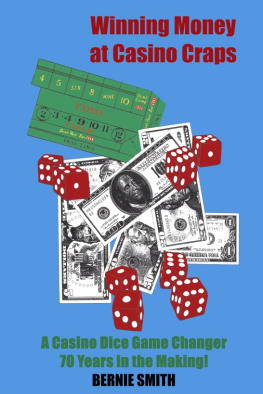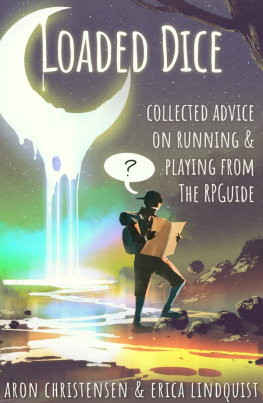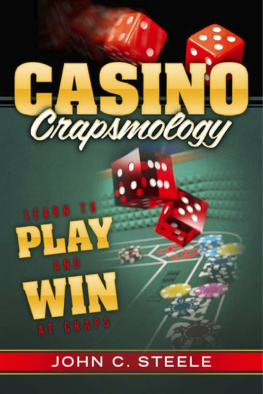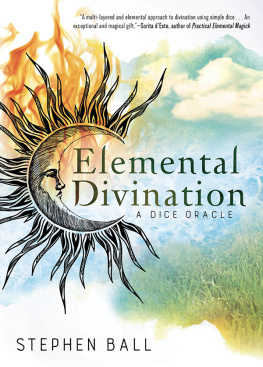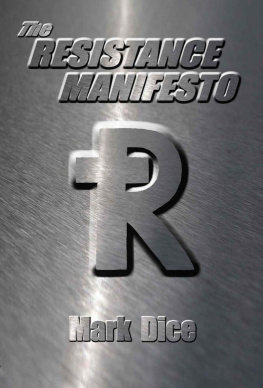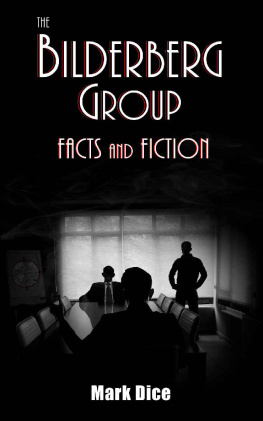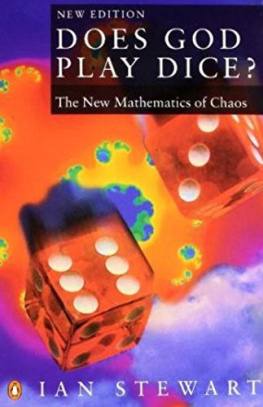
For Aidan, a fellow dice and conjuring enthusiast.
Iacta alea est

First published in Great Britain in 2012 by
Remember When
An imprint of
Pen & Sword Books Ltd
47 Church Street
Barnsley
South Yorkshire
S70 2AS
Copyright Dr Keith Souter 2012
ISBN 978 1 84468 106 8
eISBN 9781844689200
The right of Dr Keith Souter to be identified as Author of this work has been asserted by him in accordance with the Copyright, Designs and Patents Act 1988.
A CIP catalogue record for this book is available from the British Library.
All rights reserved. No part of this book may be reproduced or transmitted in any form or by any means, electronic or mechanical including photocopying, recording or by any information storage and retrieval system, without permission from the Publisher in writing.
Typeset in 10pt Minion by Mac Style, Beverley, East Yorkshire
Printed and bound in the UK by CPI Group (UK) Ltd, Croydon, CRO 4YY
Pen & Sword Books Ltd incorporates the Imprints of Pen & Sword Aviation,
Pen & Sword Family History, Pen & Sword Maritime, Pen & Sword Military,
Pen & Sword Discovery, Wharncliffe Local History, Wharncliffe True Crime,
Wharncliffe Transport, Pen & Sword Select, Pen & Sword Military Classics,
Leo Cooper, The Praetorian Press, Remember When, Seaforth Publishing and Frontline Publishing.
For a complete list of Pen & Sword titles please contact
PEN & SWORD BOOKS LIMITED
47 Church Street, Barnsley, South Yorkshire, S70 2AS, England
E-mail: enquiries@pen-and-sword.co.uk
Website: www.pen-and-sword.co.uk
Contents
Acknowledgements
T here are several people that I would like to thank for helping me with this book on dice and dice games. Firstly, I would like to thank Laura Matine, my talented illustrator who has been a pleasure to work with. She deftly turned my ideas, crude sketches and the odd video clip into first rate pieces of artwork.
Fiona Shoop was the commissioning editor at Pen & Sword who actually came up with the original idea for the book and I am grateful to her for the work that we did on it in those early days.
Lisa Hooson has been extremely helpful in taking the book from manuscript to finished work. Thank you, Lisa.
The cover really sets the book off and I have to thank David Hemingway for coming up with the idea of the 5s dice.
Dr Irving Finkel kindly allowed me to include images of the game of Senet and the Royal Game of Ur, which Laura Matine so skilfully reproduced. I thank him for this. Fishbourne Roman Palace allowed me to include the photograph of Roman dice which had been discovered in excavation of the site. I am grateful to them.
A really big thank you to my wonderful agent Isabel Atherton at Creative Authors who set the dice rolling with this one.
And finally, thanks to my wife Rachel for putting up with the incessant clatter of dice as I practiced and experimented for this book.
The dice of Zeus fall ever luckily
Sophocles (497405 bc)
A Personal Note
M y interest in magic began with a die.
Thats right, I said with a die. A lot of people are not aware that the correct term for a numbered cube is die. The word dice is the plural. The word comes from the old French d, itself derived from the Latin datum, meaning the given thing.
Anyway, back to the die that sparked my interest. It was a trick die that was part of a conjuring set I had been given for my sixth birthday. The trick was called The Dissolving Die. The die in question was made of wood and was about two inches square with a hole bored through it. The conjurer (that was me) showed the audience two ropes that had been passed through the hole.

A simple knot was tied with the top rope ensnaring the die securely.

Then as I lifted the die by the securing ropes I cried out the magic word ABRACADABRA and suddenly the die just melted through the two ropes, which were then available for anyone to examine.

It was a simple trick but the audience reaction never failed. I was hooked on conjuring from that moment and ever since then dice have been objects of fascination and potential mystery for me. In this book I hope to show you just how fascinating they can be.
Part 1
The Many Uses of Dice
Through the Ages

Chapter 1
Roll the Dice The Early Games
Iacta alea est The die is cast
Julius Caesar crossing the Rubicon
I t is unclear where dice were first used. We tend to associate them in modern times with games and gaming, yet it is highly likely that they were originally used as divinatory aids in the hands of early medicine men or women. The way that they fell would be considered under the control of a deity and the shaman, as the interpreter of the deitys answers, would be thought to have a direct line to the divine.
Almost inevitably, games would have developed using early dice, so one can think of them as the ancient worlds leisure equivalent of the television.
From the mists of time
A tablet found in the Great Pyramid of Giza, dated to about 3000 BC , describes a game of dice played by the gods in order to add five days to the calendar. It was said that Ra, the god of all creation had decreed that Nut, the sky goddess could not produce a child on any day of the calendar, which at that time had 360 days. Thoth, the god of the night and of arithmetic, writing and medicine, usually depicted as a man with an ibis head, or as a dog-headed baboon, interceded on her behalf by playing dice with the moon. He won five days of the moons light, allowing Nut to give birth and the calendar was increased to 365 days.
Greek myth also tells of their gods dicing with a knucklebone for control of the different kingdoms. Zeus won the heavens, Poseidon won the seas and Hades won the underworld.
Sophocles (496406 BC ), the great Greek tragedian, claimed that dice had been invented to entertain and amuse the troops by Palomedes during the siege of Troy, the city at the heart of the Trojan War in about 1000 BC .
The Greek historian Herodotus of Halicarnassus (485425 BC ), wrote in his great work History , that the Lydians of Asia Minor actually invented dice as a diversion from famine during the days of King Atys.



